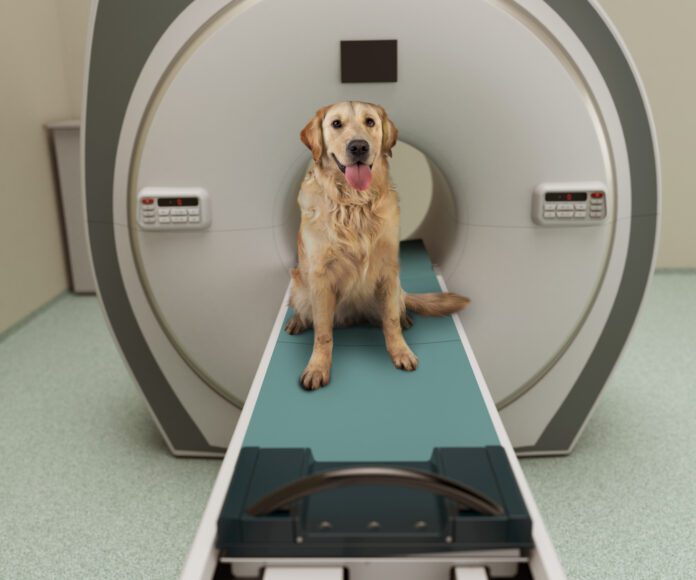“My dog knows when I’m coming home.” “My dog understands that I love him.” Many of us say these words—or words like them—every day. Yet we don’t actually know what our dog thinks about or feels: we say that she loves apples, but if she could talk, she might say she’d much prefer cheese. Like so many other aspects of our life with dogs, we simply can’t be sure—because they can’t tell us.
How Views of Dogs’ Thinking Abilities Have Changed
It was partly due to that inability to communicate that drove many early philosophers like Descartes to propose that dogs were nothing more than mindless automatons merely responding to instincts and physiological signals. Following the religious precepts of the time, he reasoned that dogs could not have intelligence, because intelligence implied consciousness, and consciousness implied the existence of a soul. The concept that any being other than humans could have a soul was, at the time, simply intolerable.[i]
We’ve come a long way since the 15th century. Over the past two decades, more and more research has pointed to the fact that, contrary to that old notion that dogs are just “dumb animals,” they have an acute ability to think and reason.[ii] Today, thanks to those decades of research studies, the question has gone from, “Do animals think?” to “How and what do they think?”
Technology’s Role in Understanding the Dog Brain
While dogs have developed highly effective social learning skills over the eons they have cohabitated with us,[iii] it wasn’t until 2012 that scientists began tapping the enormous power of fMRI (functional magnetic resonance imaging) to study and track the actual workings of the canine brain.
First, a word about fMRI and how remarkable it is that dogs can be trained to undergo these scans. If you’ve ever gone through an MRI, you know they require you to lie perfectly still, even while the machine is loudly banging, clanking, and knocking. Many people find the experience intolerable, even wearing earplugs…yet the dogs who have been part of these studies are able to lie immobile (albeit with customized ear protection), and endure the scans even while fully awake and unrestrained.[iv]
By 2014, researchers using fMRI discovered that canine and human brains process vocal emotional valence cues (signals that reveal the emotional content of a sound) in the same way.[v] Two years later, fMRIs showed that dogs can respond to linguistic cues—the non-verbal signals such as tone of voice and facial expression that we use to decipher a word’s meaning—a skill once thought to be uniquely human.[vi] At the time, however, the research was limited by the elementary state of that early fMRI technology.
Fast-forward to the early 2020s, when the study of canine brains using fMRI accelerated, just as the technology itself was being perfected. By then, the use of brain imaging had proven to all but the most hidebound skeptics that dogs process language in a manner that is extremely similar to how humans do.[vii]
Brain imaging also confirmed the similarities in the structures of both dog and human brains: although the human brain is larger and more complex, the dog brain has the same lobes that human brains have.[viii] Science writer Virginia Morell says that in comparing the canine and human brain, “at a fundamental level there are important similarities that give animals the ability to experience the world, make decisions, and do things intentionally.”[ix]
Dogs Can Think Without Language
Does that mean dogs are actually “thinking”? For decades, scientists insisted that language was essential for intelligent thought, which led to the belief that our unique language abilities pointed to humans as the only beings capable of thinking. This view has now all but been disproven—again, thanks to the magic of fMRI. During a study, when human subjects were given a problem-solving task, the language-related regions of the brain failed to activate—meaning that the ability to think isn’t dependent upon language.[x]
Back in 2013, Virginia Morell theorized that perhaps dogs might think in pictures.[xi] Her words proved to be prescient: ten years later, a landmark study found that dogs actually create a multi-dimensional image of their familiar toys or other objects in their minds. So, as they think about an object, they imagine its different features such as what it looks like, feels like, or smells like.[xii] More proof of a dog’s ability to think comes from the fact that they can also differentiate between unrelated visual images, images of dogs versus other animal species, and human voices.[xiii]
Dogs Think with Us, and We with Them
Some of the most intriguing studies of dog cognition are how dogs think with us, and how we think with them. Researcher Michelle Merritt says that “by studying dog thinking we are necessarily studying our own minds.”[xiv] Without a doubt, dogs take important cues from us in order to understand both our thinking and what we want—for instance, their ability to follow our pointing actions.[xv] Dogs and humans create and share meanings all the time: for instance, when your dog suddenly jumps up to look out the window and you follow along to see what’s out there. Examining the interactions we have with our canine companions can lead us to reconsider our ideas about what “thinking” is. While thinking obviously means evaluating and being rational, it also means having emotions, reading social cues, and engaging in meaningful communication.
Dogs are continually surprising us with what they are capable of and how, in many ways, we are alike. And yet, no matter how comparable our behaviors might appear, the fact is that we don’t occupy the same place in the world as our dogs do, and we’ll never truly be able to get inside their minds. Perhaps, as Dr. Stanley Coren says in his book, How Dogs Think, we humans may simply lack the mental capacity to understand the workings of a dog’s mind.[xvi]
[i] Coren, Stanley. “How Dogs Think: Understanding the Canine Mind.” Free Press (Simon & Schuster), New York: 2004. (book)
[ii] Merritt, Michelle. “Minding Dogs: Humans, Canine Companions, and a New Philosophy of Cognitive Science.” University of Georgia Press. 2021. (book)
[iii] Howell, Tiffany Joseph, et al. “The Perceptions of Dog Intelligence and Cognitive Skills (PoDIaCS) Survey.” Journal of Veterinary Behavior. Volume 8, Issue 6. May, 2023. Accessed through Science Direct. https://www.sciencedirect.com/science/article/pii/S1558787813001305
[iv] Berns, Gregory. “Deciphering the dog brain with fMRI.” Trends in Neurosciences, Volume 46, Issue 3, March 2023. Accessed through ScienceDirect. https://www.sciencedirect.com/science/article/abs/pii/S016622362200193X
[v] Huber, Ludwig and Lamm, Claus. “Understanding dog cognition by functional magnetic resonance imaging.” Learning & Behavior 45. February 25, 2017 Accessed through SpringerLink https://link.springer.com/article/10.3758/s13420-017-0261-6#citeas
[vi] Ibid
[vii] Cohen, Dr. Elliot. “Can Dogs Make Decisions?” Psychology Today. Feb 15, 2021. https://www.psychologytoday.com/us/blog/what-would-aristotle-do/202102/can-dogs-make-decisions
[viii] Ibid
[ix] Hertzberg, Richard, interview with Virginia Morell. “On the Frontiers of Animal Research: A Conversation with Virginia Morell.” LA Review of Books. March 27, 2014. https://lareviewofbooks.org/article/virginia_morell
[x] Thompson, Joanna. “Can we think without using language?” LiveScience. June 19, 2022. (Citing work done by Russell Hurlburt, Christopher Heavy, and Evelina Fedorenko.) https://www.livescience.com/can-we-think-without-language
[xi] Morell, Virginia. “Animal Wise: How We Know Animals Think and Feel.” Crown Publishers. February 26, 2013.
[xii] Dror, Shany et al. “Multisensory mental representation of objects in typical and Gifted Word Learner dogs.” Animal Cognition. June 8, 2022. Accessed through Springer NatureLink. https://link.springer.com/article/10.1007/s10071-022-01639-z
[xiii] Merritt, Michele. “Dismantling standard cognitive science: it’s time the dog has its day.” Biology & Philosophy. November 1, 2015. Accessed through Ebscohost: https://web-p-ebscohost-com.sierracollege.idm.oclc.org/ehost/pdfviewer/pdfviewer?vid=0&sid=a25664af-0300-4dfc-82ef-52e9944d107e%40redis
[xiii] Dror, Shaney. loc cit (citing research by Range et al 2008, Autier-Dérian et al 2013, and Gábor et al 2019). [xiii] Hare Brian, et al. “The domestication of social cognition in dogs.” Science, Nov 22, 2002. Accessed through Max Planck Institute for Evolutionary Anthropology. https://www.eva.mpg.de/documents/AAAS/Hare_Domestication_Science_2002_1555973.pdf [xiii] Coren, Staney. Loc cit[xiv] Dror, Shaney. loc cit (citing research by Range et al 2008, Autier-Dérian et al 2013, and Gábor et al 2019).
[xv] Hare Brian. “The domestication of social cognition…” loc cit
[xvi] Coren, Staney. Loc cit







How to explain, without concluding my dog used reason, his glances back at me while on a walk to determine my level of attention and if he could get away with eating some forbidden thing on the ground? If I was distracted he would most certainly indulge himself and then seemingly accept my admonition sheepishly. If I saw the object and also saw him weighing whether or not to take the chance of enduring my displeasure, I would tell him not to even think about it, then he seemed to resign himself to not having it, this time anyway. I certainly felt I was dealing with complex thoughts and emotions, not merely a creature who cannot but give into his urges with no thought as to the outcome.